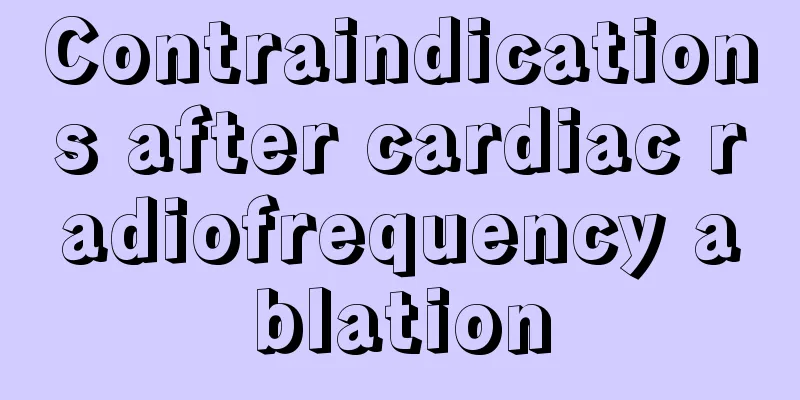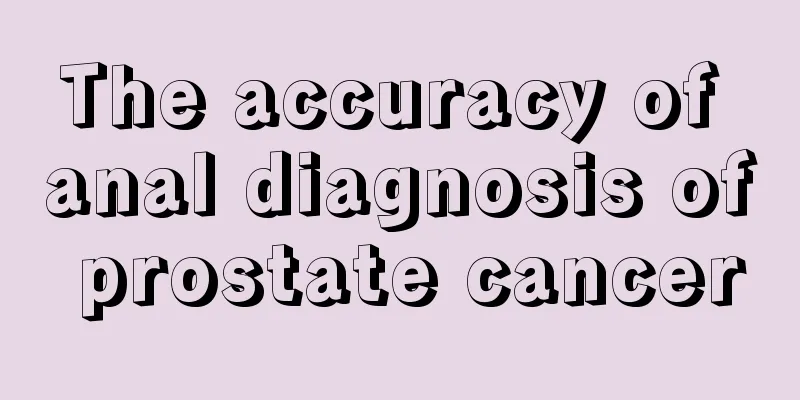Contraindications after cardiac radiofrequency ablation

|
Anyone who knows a little about heart disease knows about cardiac radiofrequency ablation, a procedure used to treat abnormal heart rhythms. As the name suggests, it treats diseases by radiating electric current. This type of surgery does not require surgery and is similar to minimally invasive surgery, with small wounds and most importantly, a very high success rate. Despite this, people who need such surgery should not take it lightly and still need to be careful before and after the surgery. Here are some things to note. Preoperative considerations 1. Electrophysiological examination and radiofrequency ablation generally require hospitalization and routine laboratory tests (including electrocardiogram and blood tests, etc.). 2. Dietary precautions: Do not eat or drink within 6-8 hours before surgery. 3. Tell your doctor the name and dosage of the drugs you are using. Stop taking all antiarrhythmic drugs 3-5 days before electrophysiological examination and radiofrequency ablation. Antiarrhythmic drugs may affect the test results. 4. Tell your doctor if you are allergic to any medication. Operation process EP studies and radiofrequency ablation are done in a specially equipped operating room (called a cath lab). The cath lab staff typically includes an electrophysiologist, assistants, nurses, and technicians. The patient lies on the X-ray examination bed, and the medical staff will connect various monitoring devices to the patient's body and cover your body with a sterile sheet. The medical staff will wear sterile surgical gowns and gloves. First, the skin at the catheter insertion site (groin, arm, shoulder or neck) is disinfected and local anesthesia is given; then a puncture needle is used to puncture the vein/artery, and the electrophysiology catheter is inserted into the heart cavity through the blood vessel; the electrode catheter used for cardiac electrophysiology is a long, flexible catheter that can transmit electrical signals into and out of the heart. The electrode catheter records the electrical activity of different parts of the heart and delivers weak electrical stimulation to stimulate the heart in order to induce arrhythmia and confirm the diagnosis of tachycardia; the doctor then uses the catheter to find the exact location of the abnormal electrical activity in the heart (this process is called "mapping"), and then uses the ablation device to send radiofrequency current for ablation treatment, thereby curing the tachycardia. Surgical complications Complications of vascular puncture include local bleeding, hematoma, infection, pneumothorax, thrombosis, embolism, etc.; complications of catheter operation include aortic valve regurgitation, myocardial perforation, pericardial tamponade, etc.; complications of discharge ablation include atrioventricular conduction block, myocardial infarction, etc. Postoperative precautions 1. After radiofrequency ablation, patients must rest in bed according to the doctor's instructions, with sandbags applied at the venous puncture site for 6 hours and at the arterial puncture site for 8-12 hours, and the affected limb must be immobilized (restricted from moving), and attention must be paid to observe whether there is bleeding; 2. Give easily digestible food during bed rest; 3. Closely observe the heart rate and rhythm in the early stage after radiofrequency ablation. If you feel any discomfort, report it to the doctor in time. If necessary, electrocardiogram, cardiac ultrasound and chest X-ray examinations should be performed; 4. If you feel that tachycardia will recur after surgery, but it has not actually occurred, do not be nervous and do not require special treatment; Normal activities can generally be resumed 1 week after surgery; 5. If there is a relapse after discharge, the electrocardiogram should be recorded nearby in time, and the surgeon should be contacted to decide on the next treatment plan. 6. Anticoagulant treatment is required after radiofrequency ablation. Generally, 1-3 months of anticoagulant drugs are required, depending on the patient's heart rhythm, age and general condition. The use of other auxiliary drugs mainly includes amiodarone after atrial fibrillation ablation. Only by taking them according to the doctor's instructions can the desired therapeutic effect be achieved. |
<<: The efficacy and function of blue chamomile
>>: What medicine should I take for bad breath
Recommend
How does body moisture come from_What causes excessive body moisture
People nowadays have irregular work and rest sche...
How potatoes treat eczema
Eczema is a problem that babies can easily face, ...
Is brain cancer prone to recurrence?
Intracranial tumors have a relatively high recurr...
What should I do if an adult has toothache? Are there any complications?
Adult teeth are basically fixed, with 32 permanen...
What are the symptoms of ovarian cancer
Symptoms of ovarian cancer are usually not obviou...
How do you know the ligament is broken
Ligaments are an important component of the human...
Chronic disease prevention and treatment
For many elderly people, they must have some dise...
Side effects of chemotherapy for breast cancer
Breast cancer is one of the most effective solid ...
What is the reason for sweating above the mouth
It is normal for the body to sweat due to fever, ...
Can water chestnuts be eaten with the skin?
Water chestnut is also called water caltrop. It i...
How to choose a cancer hospital for esophageal cancer
Esophageal cancer refers to cancer that occurs in...
How to remove the hair in the buttock groove
For normal people, when they enter puberty, pubic...
Can sternum cancer be cured?
The treatment effect of sternum cancer depends on...
Lung cancer symptoms collection
The symptoms of lung cancer are closely related t...
How to quickly get rid of garlic smell
Everyone has a deep impression of the taste of ga...









